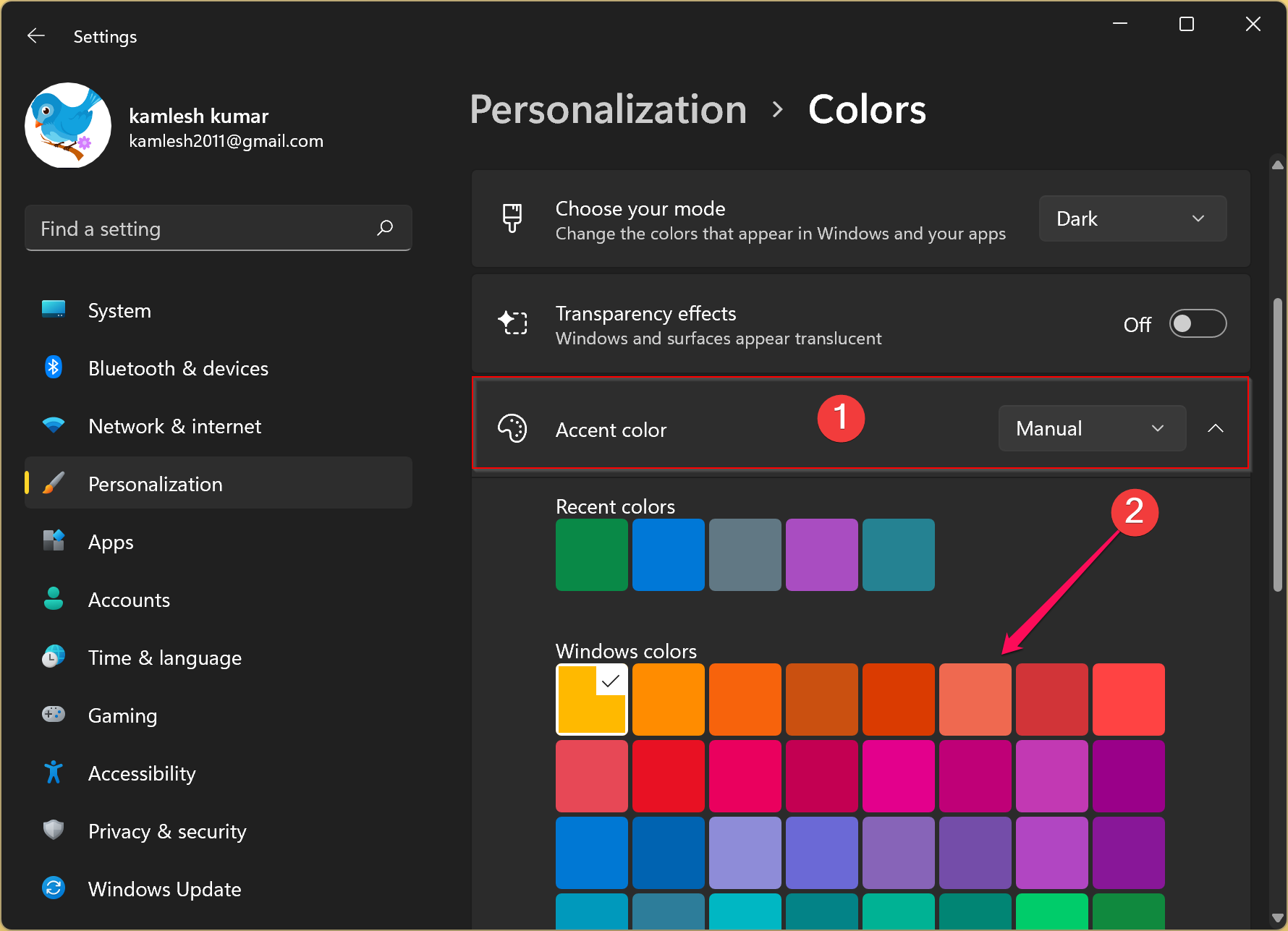

Regardless of your initial color choice (Light, Dark, or Custom), Windows 10 lets you specify an Accent Color. If you uncheck this option, the color will remain solid and your computer may be “a little” faster. Step 6: The switch Transparency Effects, when turned on, slightly changes the color of the Start menu and taskbar (among other things), depending on the item they cover. Here again, you have the choice between Light mode (default) and Dark mode (which activates the dark theme of Windows 10). Step 5: In Custom mode, again, the next choice, Choose your default app mode, is for apps (at least those that adopt the color scheme set in your Settings). Click on one of these choices and the change will take place immediately (or in a few seconds). First, the option Choose your default Windows mode lets you indicate whether you prefer a Light or Dark (the default) Start menu and taskbar. With a Custom color choice, the settings window will present you with more choices. Step 4: The drop-down list “Choose Your Color” offers three modes: Light, Dark (Windows 10’s dark theme) or Custom, which is the default. Step 3: In the left column, click on the Colors section. Step 1: To do this, click on the Start menu and then on Settings. How to Change Start Menu and Taskbar Color in Windows 10 The black color of Windows 10 does not suit you? Customize it without further delay by following our tutorial. In this tutorial, we are going to see how to change start menu and taskbar color in Windows 10.


 0 kommentar(er)
0 kommentar(er)
